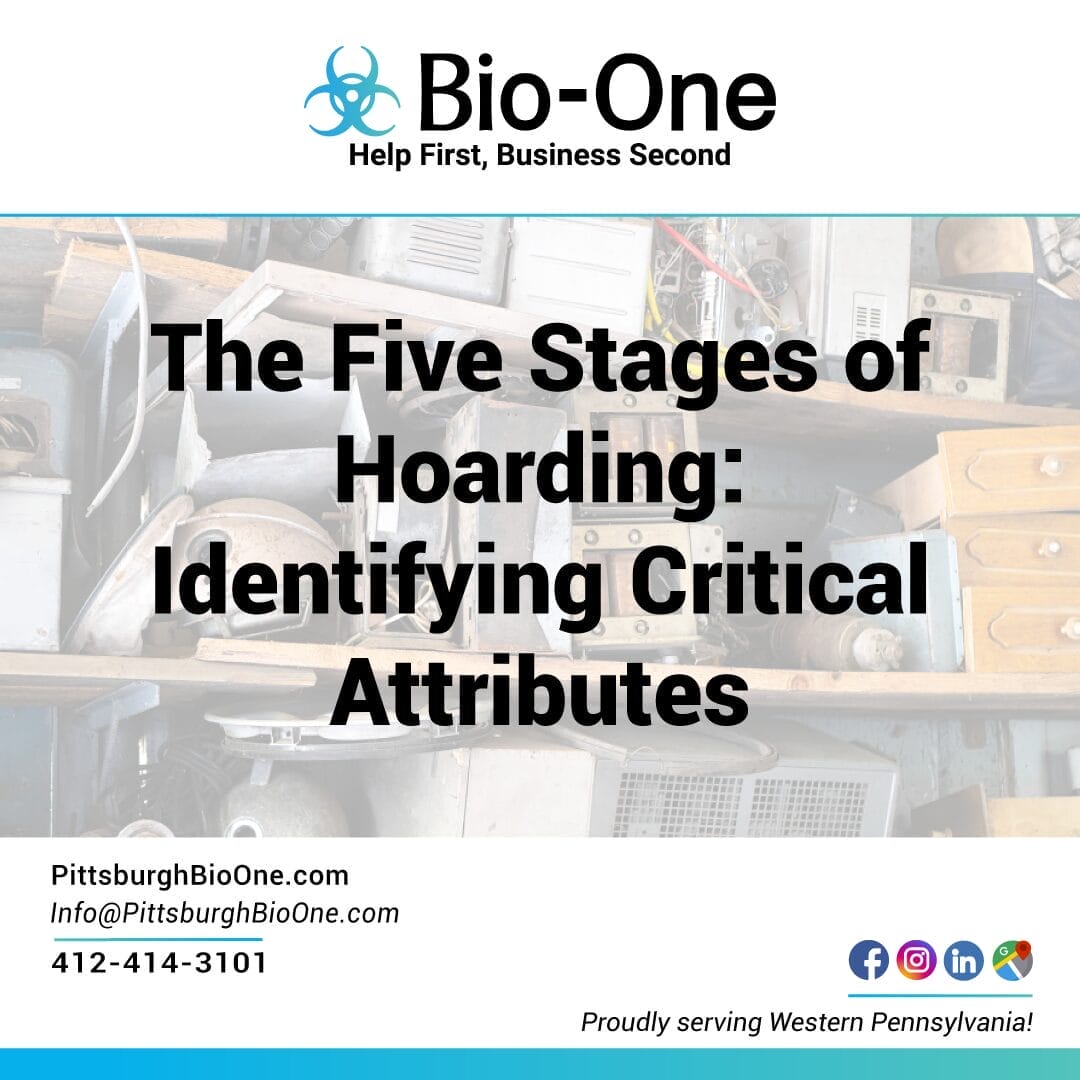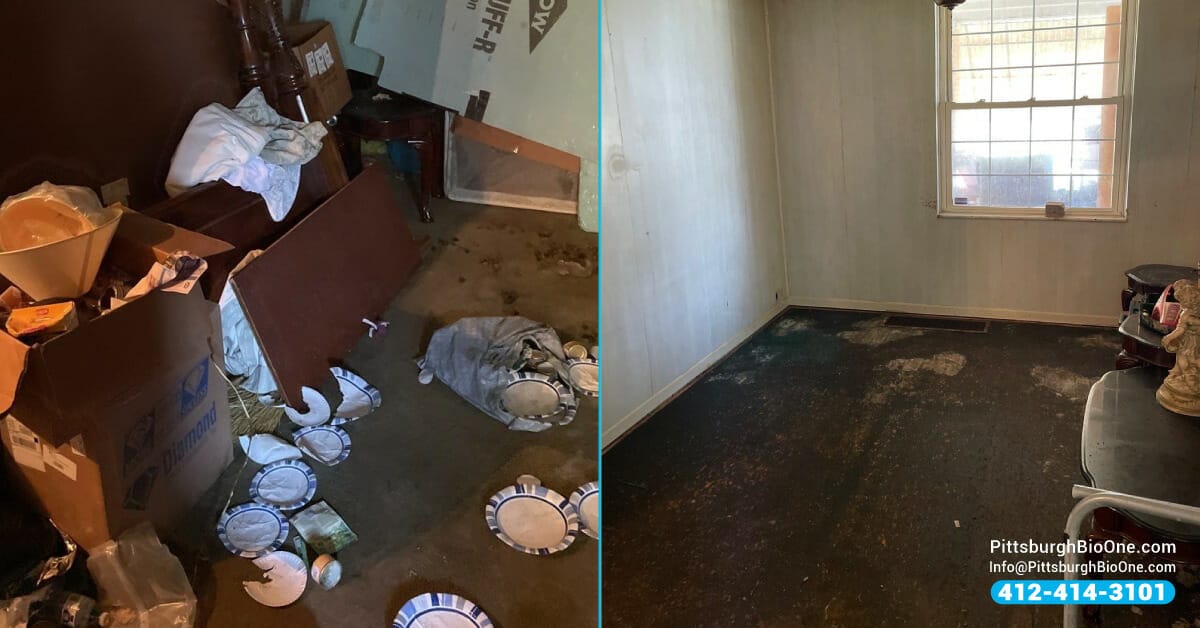
Hoarding, a mental health condition often stigmatized but little understood, is a gradual process that can significantly impact a person's life, their family, and potentially the entire community. In this comprehensive guide, we break down the five stages of hoarding, shedding light on critical attributes in each phase and offering strategies for intervention and support.
Whether you're a homeowner trying to prevent hoarding tendencies, a professional addressing hoarding with a client, or a concerned loved one, understanding these stages is the first step to tackling this challenging issue!
Hoarding Behavior... What Does It Mean?
For many, hoarding brings to mind the reality television shows that raise awareness about this enigmatic disorder. But hoarding goes beyond what's portrayed on screen; it's a behavioral pattern that begins subtly and can evolve into a crippling situation. At the heart of hoarding is the difficulty in parting with possessions, often driven by an attachment that others might find irrational or inexplicable. Hoarders don't simply have cluttered homes — they experience a deep emotional conflict when faced with the prospect of discarding items.
Take a look at the five stages of hoarding. We hope this information serves as a roadmap for understanding and addressing hoarding behaviors in someone you know or care about.
Stage 1: Compulsive Acquisition
The first stage of hoarding usually starts with a seemingly harmless habit: acquiring items. This behavior isn't problematic in and of itself, but for individuals with hoarding tendencies, it can quickly become an obsession. Compulsive buying or acquisition is often a source of comfort, control, or even excitement for hoarders. Whether it's through shopping, collecting free items, or inheriting possessions, these actions serve a psychological need, providing temporary relief from anxiety, loneliness, or other underlying issues.
Signs of Acquiring
- Chronic shopping even when it's not needed
- Bringing home every free item or promotion, regardless of its use
- Overbuying or stockpiling food, supplies, or other goods

Stage 2: Visible Clutter
Acquired items lead to the second stage: clutter. The transition from acquisition to clutter is gradual and not often recognized until living spaces become difficult to use for their intended purpose. The accumulation of possessions encroaches on daily living, often spilling into hallways, living rooms, kitchens, and other communal areas. At this stage, organizing these items becomes a herculean task, and their sheer presence can become overwhelming.
The Impact of Clutter
Clutter can lead to increased stress and anxiety, as well as a sense of helplessness in those trying to live amongst it. For individuals with hoarding tendencies, every item has a perceived value or use, making decisions about what to keep and what to discard increasingly difficult. The presence of clutter also hampers basic household functions such as cooking, cleaning, and personal hygiene.
Stage 3: Excessive Accumulation
The third stage of hoarding sees a significant increase in the accumulation of items. At this point, the compulsion to acquire is fueled by the inability to sort through or discard anything, resulting in an overabundance of possessions. The living areas become fully engulfed, and every available nook and cranny is filled, often to the point of structural unsoundness.
The 'Just in Case' Mentality
Individuals at this stage often cite the 'just in case' rationale for keeping items. The fear that they might need something they've thrown away is almost paralyzing, so they feel compelled to keep everything. This behavior is reinforced by the perceived value and utility of the items, which further justifies their retention.

Professional Support at This Stage
At this point, professional organizers and psychologists specializing in Hoarding Disorder can provide the necessary support. Cognitive-behavioral therapy (CBT), with a focus on exposure and response prevention, can help hoarders challenge and change their thought patterns and compulsions before the situation becomes even more overwhelming.
Stage 4: Functional Impairment
In the fourth stage, the hoarding behavior begins to have a noticeable impact on the person's ability to function in their daily life. The clutter and excessive accumulation make it almost impossible to lead a typical existence within their home. Basic activities such as bathing, cooking, using the bathroom, and even sleeping can become challenging or impossible.
Health and Hygiene Factors
The decline in functionality is often accompanied by a breakdown in personal hygiene. Hoarders living in unsanitary conditions can face an increased risk of illness and infestation, as clutter becomes a harbinger for pests and bacteria. Health professionals may need to become involved to address any possible physical health issues related to living in such environments.
The Link with Mental Health
Functional impairment can be linked to other mental health challenges, such as depression, anxiety, and other mood disorders. For many hoarders, their living conditions become a visible manifestation of their inner turmoil and a barrier to receiving essential care and support.

Stage 5: Health and Safety Risks
This is the convergence of all the previous stages of hoarding, culminating in a setting that poses not just psychological and social risks, but grave health and safety risks as well. By this point, the living environment is likely to be so hazardous that it can result in accidents, fires, and even death.
Recognizing Health Hazards
Common health risks at this stage include respiratory issues from living in clutter that prevents proper air circulation, as well as the spread of infectious diseases due to poor sanitation. Structural issues in the home can also pose dangers, and the hoarder's ability to receive emergency assistance can be severely compromised.
Legal and Social Consequences
Hoarders in this stage might face legal consequences, especially if their home becomes a matter of public health. Their personal and social networks are often stretched to the breaking point, and the individual may become increasingly isolated as their situation deteriorates.

How Bio-One of Pittsburgh Can Help!
Understanding the stages of hoarding is vital for anyone affected by this condition. From individuals to family members, mental health professionals, and community services, a collective and informed approach can support those struggling with hoarding to reclaim their lives. Remember, the road to recovery is often long and filled with challenges, but help is available.
At Bio-One of Pittsburgh, we specialize in the cleaning and restoration of hoarder houses, working with compassion and discretion to ensure a safe and habitable home for those affected. Call our specialists and get started with help for any of the previously described stages of hoarding! It's never too soon to ask for help.
Compassion. Experience. Respect.
Bio-One of Pittsburgh is always ready to assist you in unexpected situations. Our expert specialists are always ready to assist you in dealing with highly pressurized situations that may be emotionally and physically draining, allowing you to focus on other vital activities while healing in a sanitary environment. Locally owned and operated, we provide the following:
Disinfection, sanitation, and decontamination services
- Crime scene cleaning
- Blood spill cleanup
- Homicide and suicide cleanup
- Unattended death cleanup
- Biohazard cleanup
- Feces and bodily fluids cleanup
- Odor removal
- Virus Disinfection
- Fentanyl cleanup
- Tear gas cleanup
- Emergency vehicle decontamination
- Sewage backup cleanup
- Medical Waste disposal
Remediation & Hoarding cleanup services
- Hoarding cleanup
- Animal hoarding cleanup
- Junk removal
- Deep cleanup
- Gross filth cleanup
- Hazardous waste removal
- Homeless encampment cleanup
HELP FIRST, BUSINESS SECOND
Bio-One works closely with victim support centers nationwide and local authorities, communities, emergency services personnel, hoarding task forces, apartment communities, insurance companies, and other organizations to accomplish each customer's most efficient and superior service possible.
Many crime scene cleanup companies may face unexpected, unfortunate life events. Still, Bio-One is the right choice because of our expertise and profoundly caring and discreet specialists.
We are proud members of the NAPO Pittsburgh - National Association of Productivity & Organizing Professionals!
Serving the Greater Pittsburgh / Western Pennsylvania Area!
Bio-One of Pittsburgh serves the following Pennsylvania counties: Allegheny County, Washington County, Beaver County, Butler County, Armstrong County, Westmoreland County, Lawrence County, Greene County, Fayette County, and Mercer County.
We also serve the following cities and surrounding communities: from Allison Park all the way to Creighton, Crescent, Cuddy Curtisville, Millvale, Monroeville, Oakmont, Pitcairn, Pleasant Hills, Plum, Port Vue, Presto, Rankin, Rennerdale, Rural Ridge, Russellton, Sharpsburg, South Park to Springdale, we are ready to help you.


